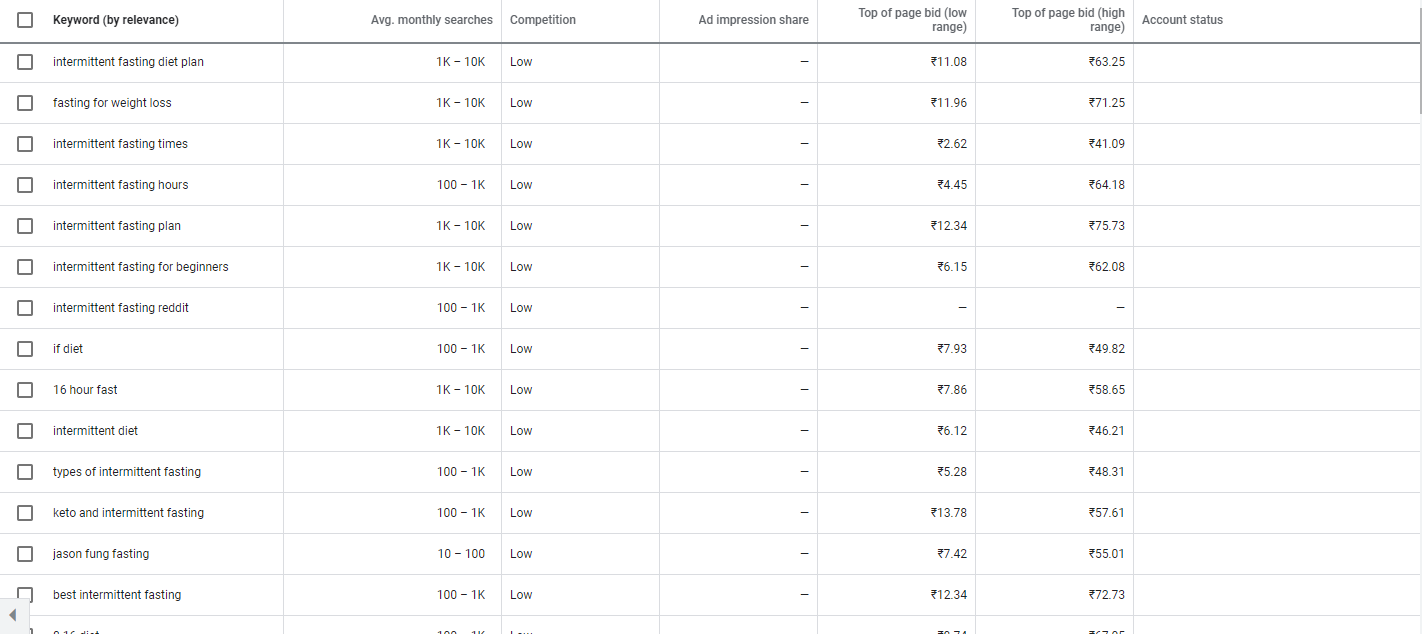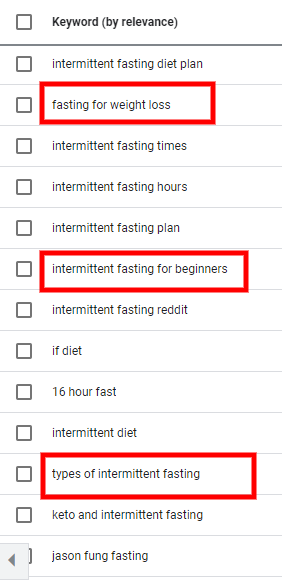
Table of Contents
- Introduction
- Voice Search Stats
- How Voice Search Is Changing Search?
- Keyword Research In A Voice Search World
- Content Optimization For Voice Search
- Voice Search Optimization: Advanced Tips
- Avoid Jargon And Complex Terms
- Put Serious Efforts In Improving The
Domain Authority Of Your Website - Pay Attention To Your Site Speed
- Include Pronouns and Prepositions In Your
Question Keywords - Produce Long Form Content
- Create And Publish More Videos
- Make Your Website More Mobile Friendly
- Optimize For Local Search
- Make Use Of Structured Data On Your Website
- Conclusion
Introduction
In the past few years, SEO has undergone a number of changes. Performing effective optimization has become more difficult, the competition is more fierce than ever before, and the algorithms have become smarter.
However, many SEO experts are so immersed in staying in tune with the rapidly changing face of SEO that they forget to overlook some parts.
One such aspect of SEO that is currently being overlooked is voice search.
With that said, when a lot of people, including many experts, overlook something, it is usually not important, right?
Let’s find out:
Voice Search Stats
To establish whether or not voice search is worth your attention, the best way is to see if the users find it useful. Here are a few stats that shed light on the picture:
- In a survey conducted by Northstar Research and findings published by Google, 55% of teenage respondents reported using voice search at least once every day.
- In the same survey, 41% of adults revealed that they use voice search at least once every day.
When asked why they use voice search, 89% of the teenagers said “because it is the future”. 85% of the adults in the survey had the same answer. 78% of the teens in the survey, along with 76% of the adults also believe that conducting a voice search is safer than traditional search methods. (Source) - High level sources from Microsoft also reported that 25% of all searches conducted using the Windows 10 taskbar (on desktops) were voice searches. (Source)
- Research conducted by Consumer Intelligence Research Partners estimates that as of June 2021, there are over 126 million smart speakers being used in US households. (Source)
Searching by speaking a query is more convenient, speaking is (obviously) much quicker than typing a search query, and a lot of people believe that it is a safer way to conduct searches. These stats clearly prove that voice search is gaining popularity among users at an alarming pace. The voice search market is already too big to be ignored by any SEO that cares about results.
The fact that many are still overlooking voice search simply means that there is an opportunity for early adopters to take advantage of the lack of competition.
How Voice Search Is Changing Search?
Optimizing a website for voice-based search queries will obviously be different. However, before we can move on to discussing how it is different and how websites can be optimized for voice searches, we must first learn how voice search has changed the practice of conducting searches on the web.
Since voice search does not use typed-in queries, it is different from regular search in two main ways. Here they are:
Voice Search Queries Are Different
Let’s start understanding this difference with the help of an example. Let’s say you want to learn how to prepare overnight oats. Without voice search, you would have to whip out your phone, open up the Google Search application and type in something like:
“Flat tyre changing guide” or “change flat tyre”
However, if you speak out and ask Google, the search query may differ. It may look something like:
“Hey Google, how can I make overnight oats at home?”
So what’s the difference here? There are actually two differences. One, the voice search query is longer. And two, the voice search query is more conversational.
How does that relate to SEO? How does it change the way you should be optimizing your website? We’ll get to all that in a later section. For now, let’s look at the other way search has been transformed by the advent of voice search.
Voice Search Results Are Different
The above statement may not be entirely true. For instance, if you open up the Google Search app on your smartphone, tap on the mic icon, and conduct a search using your voice, the results you get will be pretty much the same.
However, if you have set up your Google Search app such that it reads back the answer to your query whenever possible, you will notice that the search engine reads back the content that is displayed inside a featured snippet or knowledge graph.
This is actually the big difference that has come as a result of the popularity of voice search. The guys at Google have access to a much better perspective of where the search industry is heading and that is why they are switching from being a search engine to being an “answer” engine.
It is worth noting that the introduction of modern search features like the Knowledge Graph and Featured Snippets have reduced organic clicks by a whopping 37%.
Why has that happened? Simply because these features, in many cases, eliminate the need for clicking through on a result to find information. The information that the user is looking for is already present in the search results.
Let’s take another example. Let’s say you have a smart speaker at home and you want to know how many seconds there are in a day. Without the smart speaker and voice search, you’ll have to open up Google and type in something like “seconds in a day”. Then, you would have to sift through the results, find and click on a link that you think has the right answer.
With voice search on your smart speaker, however, all you have to do is say “Alexa, how many seconds are there in a day?” and the speaker will reply with the answer. (If you are wondering, it’s 86,400 seconds)
Once again, this has been made possible because of the modern SERP features introduced by Google.
Besides the two big changes that can be seen in the way people search, another interesting trend can be noted when one looks at the voice search stats. Let’s find out what it is:
Voice Search Is Built For Mobile
With smart speakers that only respond to voice and respond with voice, is it right to say that voice is built for mobile? The following findings from a study have prompted this point:

As you can see, voice search is being used more and more in public places. Since most people don’t walk around with their smart speakers on public transportation or in restaurants, it is safe to assume that they are using their smartphones and tablets to conduct these on-the-go voice searches.
And they should. As mentioned earlier, conducting a voice search, especially when you are standing in the bus or walking around at the gym, is more convenient that typing your query in the Google Search app.
But why is this observation important?
It’s because the number of mobile device users exceeds the number of desktop users on the web. When more and more mobile device users are using voice search, it is time for SEO experts to start paying attention.
Now, it is time to learn how we can optimize a website for voice search. The first step? Building a voice search focused keyword strategy.
Keyword Research In A Voice Search World
Choosing keywords for voice search optimization is quite straightforward. There are actually two types of keywords that you need to find and optimize for. Let’s see each one in detail:
Finding And Optimizing For Question Keywords
Question keywords have become a hot topic in SEO communities in the past few months, and for good reason. One of the biggest, most visible reasons behind the popularity of question keywords has to be the introduction of the “People Also Ask” section in Google’s SERPs.
However, question keywords may still be an afterthought in many traditional SEO strategies, they hold a lot of significance in the case of voice search optimization.
This is because when you want to learn more about intermittent fasting, you won’t ask your smart speaker “Alexa, intermittent fasting”. Your question would be something like “Alexa, what is intermittent fasting?”
This is not just speculation, thanks to the introduction of voice search, we are witnessing unprecedented growth in the usage of question keywords. Look at these charts:


The incredible thing is, this data is from 2014, back when voice search was still in its infancy stage. It is a safe bet to assume that these numbers have grown exponentially in the past seven years.
So how do you find question keywords to target?
Answer The Public is a superb free tool that will suggest hundreds of question keywords for a topic of your choice.

Another relatively less known tool for finding question keywords is the BuzzSumo Question Analyzer.
With question keywords out of the way, let’s find out more about the other types of keywords that are relevant to voice search.
Finding And Optimizing For Long-Tail, Conversational Keywords
When optimizing for voice search, the keyword research steps will remain pretty much the same. The only aspect of keyword research that will change is the way we select keywords that we want to target.
Up until now, you may have selected the keywords by evaluating associated performance metrics like monthly search volumes, keyword difficulty, seasonal trends, and CPC numbers. While these are still important, they don’t fulfill the two new attributes that you need to look for in keywords. You must select keywords that are long and conversational.
This means, besides evaluating keywords on performance metrics, you must also ask yourself if the keyword you have selected is “too robotic”.
So you have to select keywords that are more conversational and less robotic. What does this mean?
Take a look at this list of keyword suggestions for the term “intermittent fasting”:

There are a lot of “robotic” sounding keywords like “intermittent diet” or “intermittent diet fasting plan”. While these may be important, when thinking about voice search, it is also important to target keywords like the following:

These are more conversational. Sometimes, targeting conversational keywords may also mean targeting unusually long keywords, like the following:

That’s right, if you have been following the rule of not targeting keywords that contain more than five terms, it is time to throw it out (only when you are optimizing for voice search) because we don’t restrict ourselves to five term sentences when we speak.
Now that we have learnt how to find keywords that are voice search friendly, it is time to start optimizing content around these keywords. We’ll get to the details of how you can optimize content in the next section.
Before wrapping up this section, however, I would like to leave you with the advice to not optimize your content only around voice search friendly keywords. You should still target the keywords you have been targeting before you came across this guide. Simply add these keywords to your content here and there (or wherever they make sense).
Content Optimization For Voice Search
Finally, we are going to take some actual optimization actions on our websites to make it more voice search friendly.
The good news is, optimizing for voice search does not mean your content strategy needs to undergo a revamp. Nor does it mean that the existing content on your website needs to undergo a revamp.
Optimizing your content, existing and new, for voice search only requires a few minor tweaks. Let’s look at what these are:
Optimize Content For Answering Questions
As mentioned earlier, optimizing for question keywords is important from the voice search point of view.
How do you do that?
By answering questions. It’s really as simple as that. However, there are a few more details that you must pay attention to.
In a Backlinko study of 10,000 Google Home results, it was found that Google prefers to answer question based voice search queries with short answers. Particularly, Google prefers keeping these answers under 30 words in length.
So how do you answer questions of your audience in under 30 words?
The best way to do this is to create a FAQ page where you answer all your targeted question keywords with short and precise answers. Creating a FAQ page is especially advantageous in the case of voice search.
This is because 2.68% of all voice search results are sourced from FAQ pages. That number may seem small. However, in the case of desktop results, only 1.54% of results are sourced from FAQ pages.
This means, if you create a dedicated FAQ page, you can:
- Potentially make that page rank for hundreds of different question keywords
- Improve the likelihood of the answers you have written to appear as voice search results
It’s an absolute win-win. However, this isn’t all that you can do to optimize for voice search.
Optimize To Improve Your Chances Of Appearing In Featured Snippets
Appearing in the featured snippets of a Google SERP is perhaps the gold standard of what you can achieve with SEO. Even if you overlook how important it is from the perspective of voice search optimization, appearing in a Featured Snippet can potentially open the floodgates of traffic to your website.
However, this guide is about voice search and featured snippets hold great importance here. This is true for two main reasons:
- Over 40% of voice search results are sourced from featured snippets.
- If a voice search is being conducted on a smart speaker like Alexa or Google Home, the featured snippet result is virtually the only result that is provided to the user.
In other words, the importance of appearing in Featured Snippets cannot be overstated. With that said, there is unfortunately no known surefire way of appearing in the Featured Snippets. However, taking the following actions can greatly improve your chances:
Find SERPs With Featured Snippets
Doing this should not be difficult if you have an SEO tool like SEMRush or Ahrefs. Both these tools allow you to filter your target keywords based on whether or not their SERPs have featured snippets.
If, however, you don’t have these tools, you will have to manually conduct searches using your most important keywords to find SERPs that have Featured Snippets. This exercise will not just provide you with a list of keywords that are important from a Featured Snippet (and voice search) optimization point of view, it will also tell you what kind of Featured Snippets appear for different keywords.
This brings us to our next point:
Optimize Content For Specific Featured Snippets
There are different types of Featured Snippets that appear in the results of different types of search queries. The Definition Box, The Table, The Ordered List, and The Unordered List are the most common ones.
In the previous step, you should have already determined which kind of Featured Snippet appears for different keywords that you want to target. Now, it is time to optimize your content to make it fit for the relevant type of Featured Snippet.
For instance, if you see that for one of your target keywords, Google is displaying a Definition Box, you have to optimize your content to resemble the definition box. Here’s what it looks like:

And here’s what the answer looks like on the website of American Academy of Dermatology:

As you can see, the website has a long-form content piece dedicated to the subject but at the top, it has answered the question just like answers appear in the Definition Box.
When you investigate different Featured Snippets, you will find a similar trend on the websites from where they are sourced.
To optimize your content to be fit for appearing in a ordered list, it is important to mark your “steps” with H2 tags and number them (example: Step #1). Similarly, for making your content fit to appear as The Table, make sure you are creating the kind of tables that Google is pushing on their SERPs.
Keep in mind that none of these steps will guarantee that your web page will appear in the Featured Snippets or in a voice search result. However, it would improve your chances of doing so.
Optimize Content With Long-Tail Keywords
As we have already established, creating a FAQ page is an excellent way to improve your chances of being featured as a voice search result. However, you cannot expect your website to rank well by simply answering hundreds of questions with short and precise answers.
Producing long form content is a necessity if you want your website to rank well.
By including a number of different long-tail keywords throughout your long form content pieces, you can improve your chances of ranking higher, and becoming a voice search result.
This is true because of an interesting trend that was noticed during the Backlinko study mentioned earlier. The study found that only 1.7% of the voice search results had the exact same keyword in their title tag.
This means, Google doesn’t just pick answers from the top of a web page. Instead, it will pick up answers from anywhere on a web page, as long as it is short, precise, and accurate.
This also means that when you include multiple long-tail keywords in a piece of long form content, you can potentially rank that web page for multiple voice search queries.
Use Natural Language
As discussed earlier, voice search keywords are conversational and long. Keeping that in mind, it only makes sense that your answers are similar in nature. While we have already established that long answers will not work, what will work is using conversational, casual language in your content.
Voice Search Optimization: Advanced Tips
So far, we have discussed how you can find the keywords you want to target for voice search and basic content optimization tips. However nobody ever got extraordinary results by doing basic things. That’s why, I have decided to include some more advanced tips to help you improve your chances of getting your website featured in a voice search results.
Let’s jump right in:
Avoid Jargon And Complex Terms
Good content doesn’t have to use industry jargon or complex terms that your readers have to Google to understand (ironic, I know!).
Good content is actionable and easy to understand. Keeping this in mind is especially important when you are optimizing or creating content for a voice search result.
As a rule of thumb, it is recommended that you write your content for a 9th grader’s reading level. This way, you will not just be improving your chances of that content appearing in a voice search result, but also ensuring your readers don’t have a difficult time understanding your content.
Put Serious Efforts In Improving The Domain Authority Of Your Website
Since in many cases, Google is providing only a single result as a voice result, it only makes sense for that result to come from a high authority source.
That is perhaps why the average domain rating of a web page featured in voice search results is 77 (which is considerably high).
While there is no surefire connection that has been established between high domain authority and voice results, there seems to be a definite correlation.
The benefit of having a high domain authority is that even if one of your pages does not have a lot of links pointing to it, it can still be featured as a voice search result. This is because while that page may not have a high rating itself, it does belong to a highly authoritative website.
Pay Attention To Your Site Speed
Once again, there is no direct relationship that has been established between high speed websites and voice search results. However, a trend has been noticed. This trend states that the websites featured in voice search results load their first byte in 0.54 second.
For comparison, the time taken by an average web page to load its first byte of data is 2.10 seconds.
Improving your website’s performance will also contribute to a better domain authority, which will in turn improve your website’s chances of appearing in a voice search result.
Include Pronouns and Prepositions In Your Question Keywords
Also known as filler words, pronouns and prepositions contribute a great deal in making your question keywords more ‘conversational’. From a voice search optimization point of view, this is incredibly important.
It is also important because Bing’s Purna Virji has also recommended the same in an article she contributed to Moz. Here’s her exact quote:
“The more matches you have, the more likely your ad will show on a voice search that includes words like “a” and “me” and “for.””
Considering Bing is the second biggest search engine by market share, it is safe to assume that the experts at Google also place similar importance in these “filler words”.
Produce Long Form Content
It has long been established that long form content is important for SEO success. If you did not already know, the average first page result in Google’s SERPs has over 1400 words of content.
In the same way, long form content is important from a voice search perspective. For starters, the average content length of a web page that is featured in voice search is over 2300 words. Once again, no definitive relationship has been established between voice search results and the length of content on a page, but there is a clear correlation between the two.
When you think about it, you can also see the logic behind this correlation. First of all, as we discussed earlier, longer content gives you more opportunities to include long-tail keywords that can be featured in a voice search result. This way, a single long form content page can potentially rank for multiple voice search friendly keywords.
Secondly, when you try to look at things from Google’s perspective, a user is more likely to find a “satisfactory” answer to their question on a query on a page that has a lot of content.
So, in order to improve your website’s chances of appearing in voice search results, it is strongly recommended that you produce a lot of long form content.
Create And Publish More Videos
The importance of visual content in SEO cannot be overstated. Users love videos and Google supports stuff that is loved by the users. This is true in the case of voice search results as well. Actually, it is true for all “conversational” searches.
Let me explain this with an example. When I search Google for “change a tyre”, I get video results but they are present under a Featured Snippet. Take a look:

On the other hand, when I search for “how can I change the tyre of my car”, the results look something like this:

As you can see, the video result is actually the top result here. While Google cannot and does not start playing the video when the search term is more conversational, its algorithm does seem to think that a Video Featured Snippet will actually be more helpful than a regular Featured Snippet.
Make Your Website More Mobile Friendly
As we discussed earlier, a significant share of voice searches are being conducted on mobile devices. So, if you are interested in attracting traffic coming from voice search, you must cater to mobile device users.
This point is especially relevant to you if you own or work for a local business. This is because voice searches are upto three times more likely to be local searches, when compared with text-based searches.
It even makes sense from a user experience point of view. If you are using a mobile device, on your way to work, and want to find a local coffee shop on the way, you are very likely to simply ask your phone instead of typing into it.
Since 46% of searches online are local searches, local businesses should seriously focus on making their websites as mobile friendly as possible.
Optimize For Local Search
Voice search and local SEO are not just important for local businesses, both entail a lot of the same steps. This is because in both cases, you are trying to communicate to Google that your’s is a local business that operates in a specific area.
To that end, one of your first and most important steps should be to claim your Google My Business (GMB) listing and optimize your profile.
Doing this will provide Google with the exact information that users conducting local voice searches are looking up. According to a 2019 report by Microsoft, over 50% of users use voice search to take actions like find directions to stores and make reservations.
In another Google survey of regular smart speaker users, 44% respondents said they use their smart speaker to shop for groceries and household items at least once a week.
Make Use Of Structured Data On Your Website
Structured data, or Schema Markup, is a form of metadata that search engine algorithms use to understand the context of the information present on a web page.
For instance, without structured data, the ‘Contact Us’ page on a website is just like any other web page in the eyes of the search engine. However, with structured data, the search engine algorithm can understand that the page contains the contact information of your business.
Whether you are hoping to get into the Featured Snippets or trying to do more with your local SEO efforts, structured data can go a long way. While it may not be a search engine ranking factor, it helps search engines provide more accurate information to users and at the same time, helps them better understand the content on the websites that they are ranking in their SERPs.
Implementing structured data on your website can be undertaken as a DIY job, although it may be a little difficult and time consuming if you are not handy with technical stuff. If you want to give it a go, here’s a great beginner guide. Alternatively, you can seek the help of a professional.
Conclusion
All of the data that I have used in this guide points to two facts: voice search is going to become more useful and more accurate and it will continue to garner popularity as a method to find information on the web.
I hope that this guide has helped you start realising the importance and understanding the process behind optimizing for voice search. If you have any questions or queries, feel free to drop them in the comment section.
FAQs
Why Is Voice Search Important For SEO?
As Google continues refining its search algorithm to provide direct answers to a search query, voice search ensures you use keywords and key phrases strategically. With voice search, users look for direct answers to a problem, and if your website is able to offer that answer in crisp detail without beating around the bush, there’s a high chance that it will show up in voice searches made through a voice assistant. With daily lives getting busier, optimizing content to make it easier to find has become vital for SEO.
Is Voice Search A Ranking Factor?
Voice search is a ranking factor. Google is known to use a wide range of factors to determine the ranking of a website in voice search. These factors include:
- The relevance of the content to the verbal search query made
- The website's authority and speed
- The use of long-tail keywords
- Use of natural language
- The user experience the website offers
- The presence of feature snippets on the page
As these queries are more conversational and based on natural language delivery instead of being text-based searches, using long-tail keywords and maintaining a natural, conversational tone throughout is important.
What Are The Benefits Of Voice Search Optimization?
Five benefits of voice search optimization:
- Increases visibility of the website in voice search results, which can lead to a significant increase in traffic to the website.
- By providing accurate and relevant information to voice search queries, your website builds trust and becomes a reliable source of information that always delivers customer satisfaction.
- An optimized website will pop up to answer any relevant questions your target customer is trying to ask through voice search.
- It increases conversion rates as your customers are more likely to take action in one go.
- It improves the SEO quality of your website, making it possible for the website to rank higher on search engines.
Does Voice Search Impact SEO?
Yes, voice search has an impact on SEO. Voice search queries are conversational and natural language-based instead of text-based queries. As most voice search queries are local, it also can give insights into how your website can be optimized more efficiently to capture local traffic. Additionally, as most voice searches are made from mobile phones, the possibility of a potential customer finding your business and making an inquiry call becomes higher.




